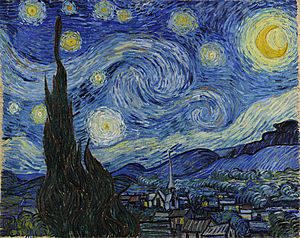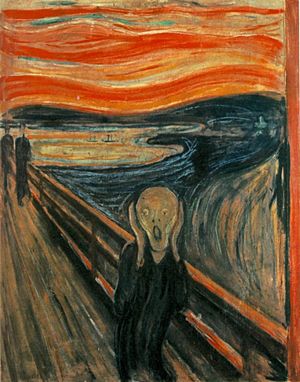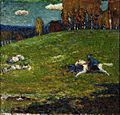Art movement facts for kids
An art movement is like a special style or way of making art. It's often followed by a group of artists who share similar ideas or a common way of thinking about art. Sometimes, a critic or historian gives a name to a certain type of artwork after it's been created.
After photography became popular, artists started exploring many new ways to create art. This led to lots of different art movements.
Some art movements are clearly linked to a specific time, place, or even certain artists. Artists sometimes explain their movement's ideas themselves, often by publishing a statement called an manifesto. Other times, art historians or critics name a movement later on.
Art movements can also be connected to similar ideas in architecture, literature, philosophy, or even politics.
Contents
What Are Some Famous Art Movements?
Here are some important art movements in rough date order:
Classicism and Neoclassicism
- Classicism is an art style that looks back to the art of ancient Greece and Rome. It focuses on order, balance, and clear forms.
- Neoclassicism came later, around the 1700s and 1800s. It was a new interest in classicism, often showing serious subjects and clear lines.
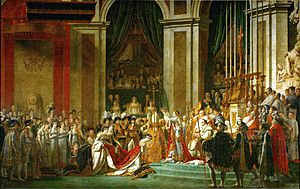
Impressionism
Impressionism started in France in the late 1800s. Artists like Claude Monet wanted to capture the "impression" of a moment. They used small, visible brushstrokes and focused on light and color. They often painted outdoors to show how light changed.
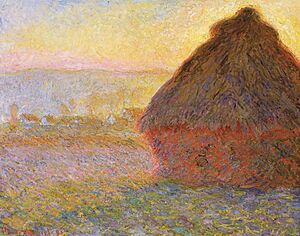
Post-Impressionism
After Impressionism, artists like Vincent van Gogh and Paul Cézanne developed post-impressionism. They still used bright colors but added more emotion or structure to their work. They explored personal expression and symbolic meanings.
Art Nouveau
Art Nouveau was popular around the turn of the 20th century. It featured flowing lines, natural forms, and decorative patterns. You can see it in architecture, furniture, and posters.
Modern Art Movements
The early 20th century saw many exciting new movements, often called modern art.
Fauvism
Fauvism (pronounced "foe-viz-um") was a short but bold movement led by Henri Matisse. Artists used very bright, unnatural colors to express emotion, not just to show reality. The name "Fauves" means "wild beasts" because their colors were so strong.
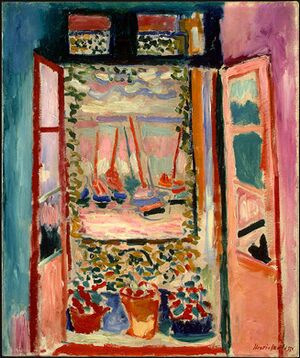
Cubism
Cubism was created by Pablo Picasso and Georges Braque. They broke objects and people into geometric shapes, like cubes, and showed them from many angles at once. This made art look very different and challenged how we see things.
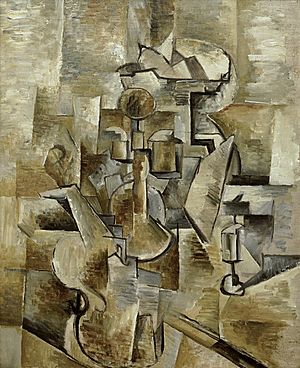
Expressionism
Expressionism focused on showing feelings and emotions rather than realistic images. Artists used distorted shapes and strong colors to express their inner world. Edvard Munch's The Scream is a famous example.
Dadaism
Dadaism (or Dada) was a playful and rebellious movement that started during World War I. Dada artists questioned everything, often using humor and nonsense to protest against traditional art and society. They made "anti-art" and ready-made objects.
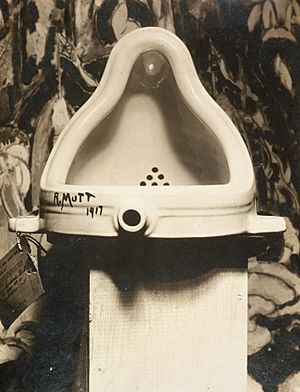
Surrealism
Surrealism grew out of Dadaism. It explored dreams, imagination, and the subconscious mind. Artists like Salvador Dalí and René Magritte created strange and dreamlike scenes, mixing reality with fantasy.

Contemporary Art Movements
Contemporary art refers to art made in our lifetime, generally from the 1960s or 1970s to today.
Abstract Expressionism
Abstract Expressionism was a major American art movement after World War II. Artists like Jackson Pollock and Arshile Gorky used large canvases and energetic brushstrokes to express emotions and ideas without showing recognizable objects.
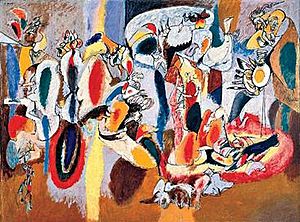
Pop Art
Pop art emerged in the 1950s and 60s. It used images from popular culture, like advertisements, comic books, and everyday objects. Artists like Andy Warhol and Roy Lichtenstein brought common items into fine art.
Conceptual Art
Conceptual art focuses on the idea or concept behind the artwork, rather than the finished object itself. The idea is more important than how it looks. Sometimes, the art might just be a set of instructions or a thought.
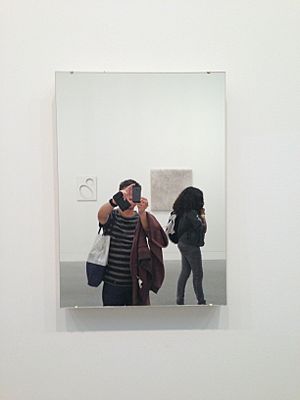
Images for kids
-
Thomas Cole, The Course of Empire: The Savage State, 1836, Hudson River School
-
Gustave Courbet, Stone-Breakers, 1849, Realist School
-
Jean-Baptiste-Camille Corot, c. 1867, Ville d'Avray National Gallery of Art, Washington, D.C., Barbizon School
-
Wassily Kandinsky, 1903, Der Blaue Reiter painting, Der Blaue Reiter 21.1 cm × 54.6 cm (8.3 in × 21.5 in)
-
Pablo Picasso, Family of Saltimbanques, 1905, Picasso's Rose Period
-
Kazimir Malevich, (Supremus No. 58), Museum of Art, 1916, Suprematism
-
Albert Gleizes, Woman with Black Glove, 1920, Crystal Cubism
-
Piet Mondrian, Tableau I, 1921, De Stijl
-
Theo van Doesburg, Composition XX, 1920, De Stijl
-
Charles Demuth, I Saw the Figure 5 in Gold, 1928, Metropolitan Museum of Art, Precisionism
-
Art & Language, Art-Language Vol.3 No.1 (1974), Château de Montsoreau-Museum of Contemporary Art, Conceptual art
-
Tony Smith, She Who Must Be Obeyed, 1975, Tony Smith Department of Labour Building, Minimalism
-
Dan Flavin, Untitled (Corner Piece), 1930, Tate Liverpool, Installation art
See also
 In Spanish: Movimiento artístico para niños
In Spanish: Movimiento artístico para niños


